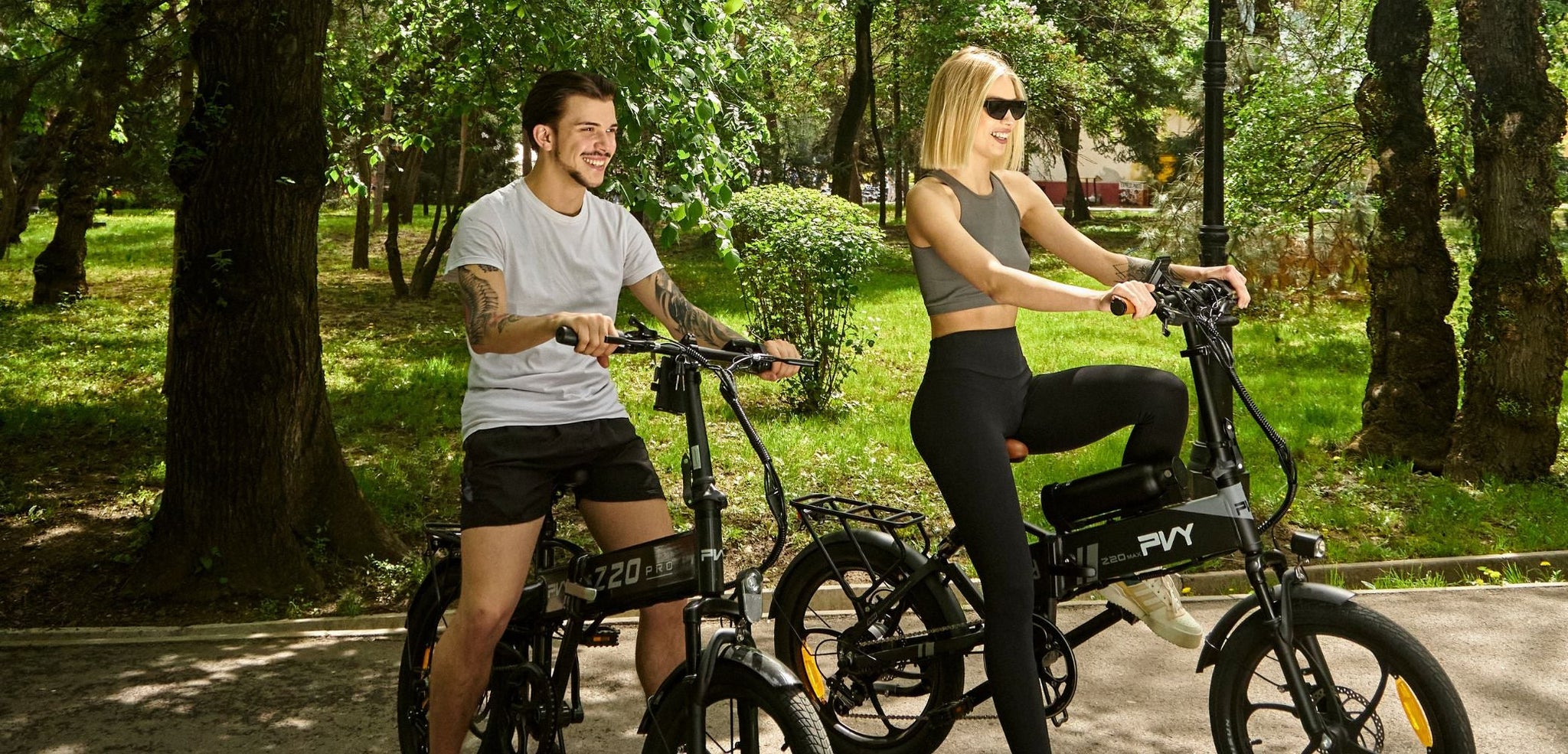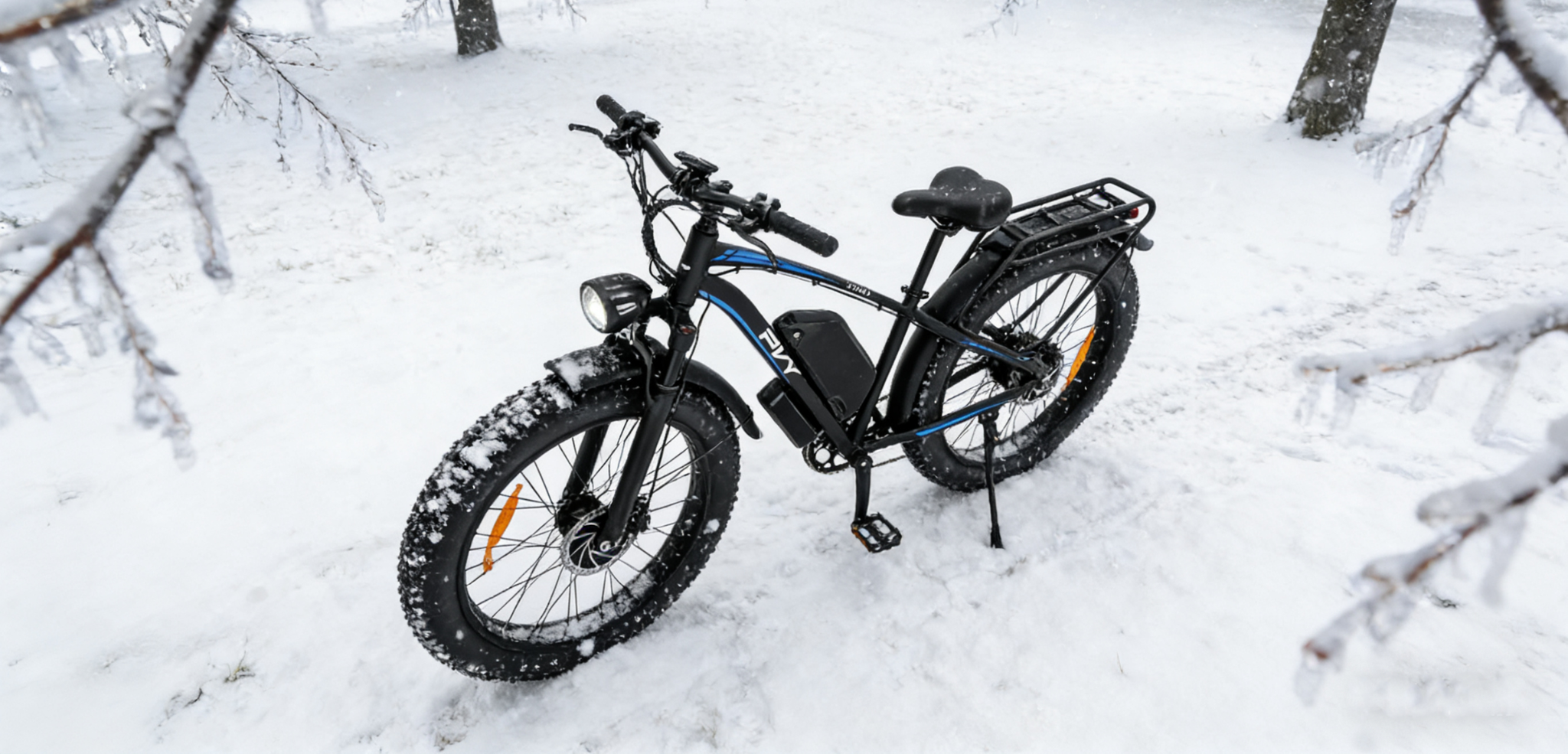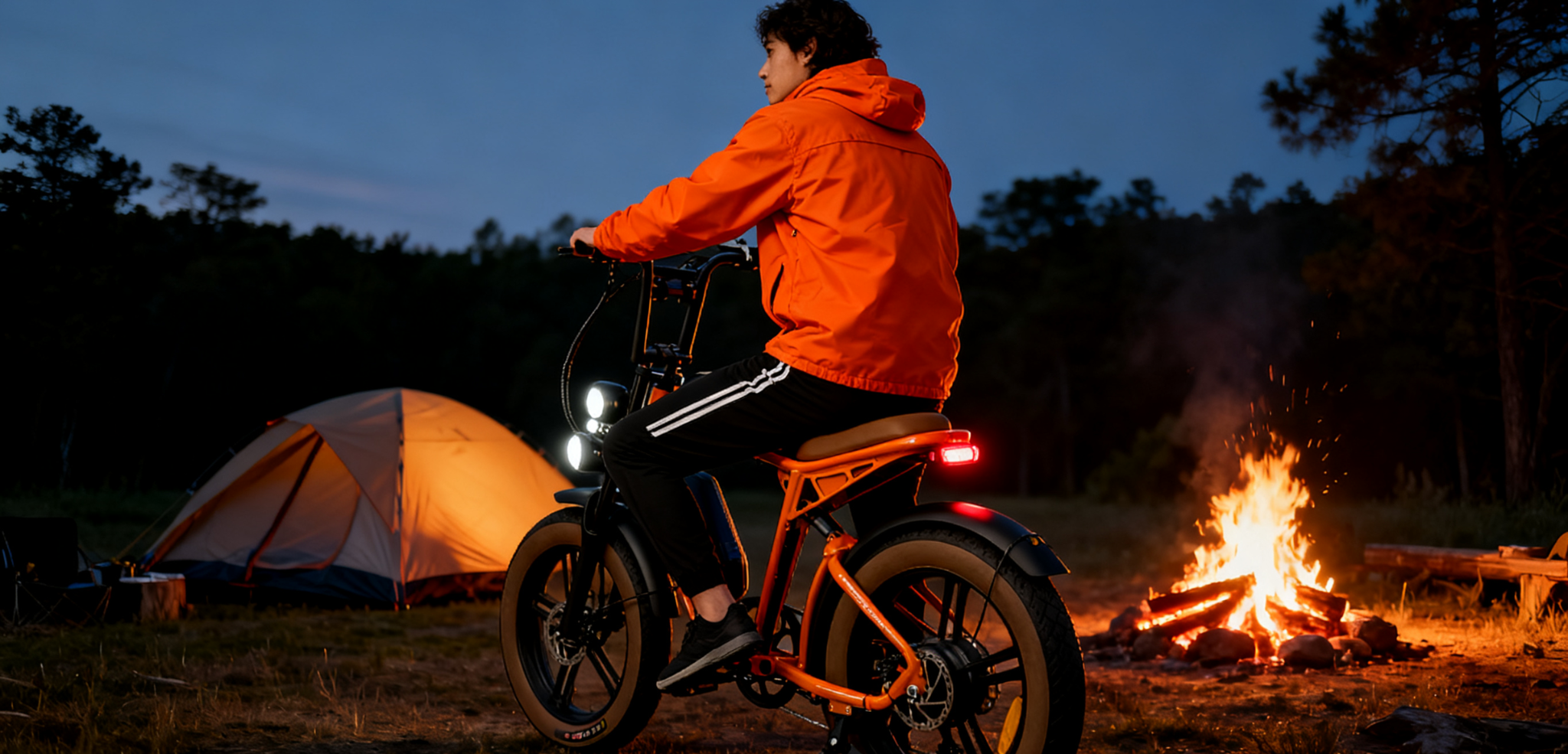


Read more
How Tyre Width Affects the Riding Experience: A Guide to Fat Tyre E-Bikes
Why did you choose to ride a bike in the first place? Maybe because of the thrill, the freedom, or the nature connection that no other vehicle offers. But within the world of biking, there are many subtle factors that shape the quality of your ride.
One of the most important, and often overlooked, is tyre width. Just like in cars, where rim size gets all the attention, ebikes have their defining feature too: the width of the tyres. The standard thin tyres offer speed and responsiveness. But when it comes to thick tyres, those found on fat tyre bikes, it’s an altogether different riding experience. Why?
Read through this blog to explore how tyre width impacts ride quality, with a deep focus on fat tyre ebikes. We’ll break down their advantages, best use cases, and finally recommend some top models if you really want to rediscover the joy of riding.
Does Tyre Width Affect Comfort and Riding Experience?
Tyres can be thought of as the feet of a bike, as they are the only part in consistent contact with the ground. Just like different shoe soles can make walking comfortable or painful, the width and size of your e-bike’s tyres play a major role in how smooth or demanding your ride will feel.
Less width (thin tyres) means less contact with the ground, which is great for speed on paved roads. But when the terrain gets rough, they struggle to absorb impact or maintain grip.
On the other hand, more width means more surface contact, which aids in better traction and road grip. Moreover, the added air volume in fat tyres also acts as natural suspension, making the ride more cushioned without the need for additional shock systems.

What are Fat Tyres in Ebike?
Primarily, we can classify ebike tyres in two categories based on width. There are the standard tyres and fat tyres. Standard bike tyres usually range from 1.5 to 2.5 inches in width. They are also called thin tyres, commonly found on regular bicycles and most urban electric bikes.
Some tyres fall in the range of 3.8 inches to 5 inches wide, termed fat tyres. Due to their added grip and more control, they’re preferred for off-road riding and all-terrain bikes.
Comparative Review: Fat Tyre Ebike vs Standard Tyre Ebike
The width alone brings in a lot of changes in tyre behavior compared to standard ones. Here’s a simple comparison to help you get a better understanding of how fat tyres and standard tyre bikes differ across key areas:
| Standard Tyres | Fat Tyres | |
| Width | 1.5 to 2.5 inches | 3.8 to 5 inches |
| Air Pressure (PSI) | 80–130 PSI | 5–30 PSI |
| Comfort Level | Moderate | High comfort |
| Grip & Traction | Good on paved surfaces | Excellent on all terrains |
| Suitable Terrain | Roads, bike lanes | Sand, snow, mud, gravel, trails |
Fat Tyre Benefits for Ebike Riders
Thin tyres have long been popular for their lightweight design and quick handling. But riders who crave adventure, exploration, and a true feeling of fun often find that thrill on wider tyres. That’s why fat‑tyre e‑bikes have become such a buzzworthy choice.
Here’s how they improve your overall riding experience:
Balance and Stability
Fat tyres spread your weight across a larger surface; they act like wide, cushioned platforms under each wheel. That extra contact patch keeps the bike steady under braking and when pushing through obstacles.
Better Traction
With more rubber on the ground, fat tyres grip loose and uneven surfaces far better than thin tyres. Fat tyres bite into the surface instead of skidding over it. The wider profile fills in gaps and irregularities, giving your e‑bike the confidence to conquer soft terrain. where narrow tyres simply spin out.
Shock Absorption
Thanks to their high air volume, fat tyres cushion impacts much like a soft suspension system. Every rock, root, or pothole is absorbed by the tyre rather than transmitted up through your hands and arms.
Terrain Adaptability
The wide, low‑pressure tyres “float” over sand, snow, and deep mud instead of digging in and bogging down. That means you can ride on beach trails, packed snowfields, or wet forest floors with ease.

How to Choose Fat Tyre Ebikes?
Buying an electric bike doesn’t mean just checking the tyre width. You’ve to consider the other technical aspects as well. Here are a few areas to look at:
Use Case
Before anything else, ask yourself: Where and how do I plan to ride this bike?
Fat tyres are ideal for soft, unstable, or uneven surfaces like snow, beach sand, loose gravel, forest trails, or slushy city streets in winter.
So, if your riding involves off-roading, exploring mixed terrain, or commuting through all weather and seasons, a fat tyre e-bike is worth the investment. However, if you’re mostly riding on smooth urban roads or looking for speed, a standard or hybrid ebike may serve you better.
Wheel Size
Width isn’t the only dimension that matters – wheel diameter/size also affects how the bike performs. Most fat tyre e‑bikes come in two main wheel sizes:
- 20-inch wheels: These are lower to the ground, provide excellent stability, and work well for soft surfaces like snow, sand, or mud. Ideal for technical off-roading and riders who prefer a more planted feel.
- 26-inch wheels: These roll faster and smoother over obstacles like rocks or roots. They offer better momentum and are better suited for long trails.
Battery and Range
Battery size determines how far your e-bike can go. Since fat tyres create more rolling resistance (due to their width and surface contact), they naturally draw more power from the motor.
So, look for ebikes with higher battery storage, ideally 1000Wh or higher. If you’re planning longer commutes, trail adventures, or rides across hilly terrain, don’t compromise on battery size.

Q-factor
The Q-factor refers to the distance between the outer edges of your crank arms (where the pedals attach). Normally, fat tyre bikes have wider rear ends to accommodate those big tyres, which pushes the cranks outward.
Why does this matter? A wider stance can change your natural leg alignment, affecting pedaling efficiency and potentially causing discomfort in your knees, hips, or ankles.
So, when selecting a fat tyre bike, pay attention to the Q-factor. Look for models that offer a balanced crank width or use specially designed bottom brackets that reduce the pedal spread. If possible, test ride to make sure it feels natural
5 PVY Fat Tyre EBikes to Kickstart Your Adventure
If you’re also into thrill-packed rides and looking for fat tyre electric bikes, there’s nothing better than checking out the wide collection from PVY. From affordable everyday options to long-range, performance-driven models, PVY has something for all kinds of riders.
PVY Turbo
Turbo is an affordable hill-climbing beast fitted with a 250W motor (peaks up to 750) and a long-range battery. Because of its foldable and compact design, it’s ideal for those with limited storage space or who need to carry their e-bike on public transportation.
PVY Z20 PLUS
Z20 Plus is an all-terrain performance expert with a 250W motor that provides 100 Nm torque. Its high-capacity 48V 16.5Ah battery provides a range of up to 120km, making it suitable for longer rides.
PVY LS20
LS20 is a comfort cruiser ebike. Its highlight is its step-through design, which allows for easy mounting and dismounting, making it accessible for riders of all ages and abilities.
PVY X20
X20 is a long-range off-roading ebike. It features a 250W geared hub motor (unlockable up to 1000W) with 100Nm of torque, best for challenging terrains. The dual battery system (48V 15Ah + 15Ah) provides a range up to 200km.
PVY MAX26
MAX 26 is a trail conqueror, the most powerful fat tire ebike in our lineup. It comes with dual 250W geared hub motors (unlockable up to 1200W each). They collectively deliver a torque of 240Nm, which is enough to tackle steep inclines and challenging trails effortlessly.




